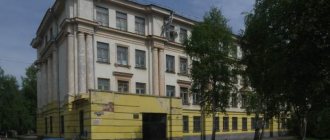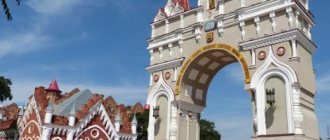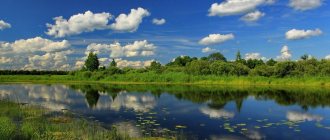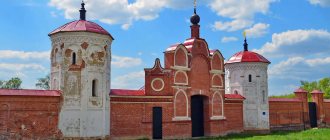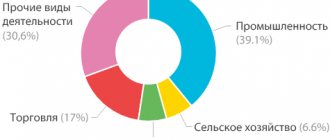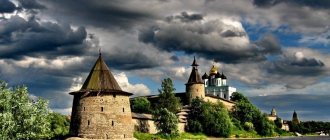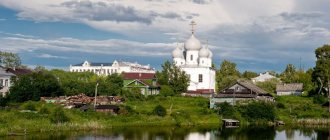More than 2/3 of the entire territory of the region is occupied by the Kola Peninsula, located beyond the Arctic Circle. The region includes several peninsulas and islands. On the satellite map of the Murmansk region, it is clear that it borders on:
- Karelia;
- Finland;
- Arkhangelsk region;
- Norway.
The administrative center is the city of Murmansk.
The hydrography of the region is represented by numerous large and small rivers and lakes. The largest freshwater body of water in area is Lake Imandra .
The most significant rivers of the Murmansk region:
- Umba;
- Cola;
- Tuloma;
- Crow;
- Niva;
- Varzuga;
- Ponoy.
The region's lands are occupied by tundra, northern taiga and mountain ranges, which are located in the western part. In the polar forests there are bears, wolverines, and wolves. The main riches of the Murmansk region are mineral resources , many of which are not found in other parts of the globe.
Geography
The area of the Murmansk region is 144,902 square kilometers, the water surface accounts for 8.2% of the area. It has borders with Norway and Finland, and of the Russian regions on land it borders only with the Republic of Karelia. It is washed by the Barents and White Seas, through the latter it has a border with the Arkhangelsk region.
Most of the territory of the Murmansk region (70%) is located on the Kola Peninsula. Also, most of the region is located beyond the Arctic Circle. It is important to note that the Murmansk region is located on the Baltic crystalline shield, which explains the huge variety of minerals. In the depths of the region you can find 30% of the minerals known on our planet.
In the central part of the region there are mountain ranges, the highest of which are the Khibiny Mountains (the highest point is 1200 meters). Also worth noting are the Lovozero tundra (1120 meters), Monchetundra (965 meters) and others, lower. Thanks to these mountain ranges, active winter tourism is developed in the Murmansk region.
Despite the fact that neighboring Karelia is considered the “country of lakes”, in terms of this indicator the Murmansk region is not only not inferior, but also significantly superior. There are almost 110 thousand lakes with an area of more than 10 hectares, and 18 thousand rivers with a length of more than 100 meters. Such a large number of reservoirs is explained by the activity of the glacier, which, during its retreat, left scratches on the ground, which later became lakes and rivers.
The largest rivers of the Murmansk region are the Umba, Niva, Ponoy, Varzuga, Voronya, Tuloma, and Kola. The largest lakes are Imandra, Lovozero, Kovdozero, Kolvitskoye, Sergozero, Vyalozero. The deepest is Umbozero (maximum depth 115 meters). There are 20 large reservoirs.
Climate
In the southern part of the Murmansk region the climate is temperate, cold, in the northern part it is maritime subarctic, but it is moderated by the North Atlantic Current (a continuation of the Gulf Stream). It is thanks to this that the region has ice-free ports (the northernmost in the world).
Summer is characterized by a polar day - from May 22 to July 22, the sun never sets beyond the horizon; winter is characterized by a polar night, at this time the sun does not appear over the horizon (from December 1 to January 10). Such phenomena often cause a feeling of discomfort among guests of the region (as well as among some residents).
The coldest months are January and February, the warmest are June and July. In winter in the central regions, the temperature can drop to -55 (such maximums were recorded), in the summer it rises to +33 (also a maximum). However, due to high air humidity and strong winds, even slight frosts in the Murmansk region can be very difficult to bear. It is worth noting that frosts often occur even in summer; there are also snowfalls in June. Snow usually falls in mid-October and remains until the end of May. Most reservoirs freeze in November and are cleared of ice in May. Some lakes may become ice-free in June.
By Sergey Gruzdev, via Wikimedia Commons
Population
The population of the Murmansk region is 757 thousand people, the share of the urban population is 92%. The population density is 5.2 people per square kilometer. The population is declining, so in 1989 there were 1 million 146 thousand people living in the region, and in 2002 - 892 thousand people.
The national composition is dominated by Russians - 80%, Ukrainians are in second place - 4%, and Belarusians are in third place - 1.5%. The indigenous population is the Sami, their share is 0.2% (1600 people). In total, more than 35 nationalities are represented in the region.
The number of settlements with more than 10 thousand inhabitants is 15.
| Table. 10 largest cities of the Murmansk region | |
| City | Number of inhabitants |
| Murmansk | 301500 |
| Apatity | 56700 |
| Severomorsk | 51000 |
| Monchegorsk | 43000 |
| Kandalaksha | 32600 |
| Kirovsk | 27000 |
| Olenegorsk | 21000 |
| Polar | 17000 |
| Kovdor | 17000 |
| Zapolyarny | 15000 |
Small towns within the closed city of Aleksandrovsk
Polar
Population 17,296 people (2016). City of Military Glory. It is part of the ZATO Aleksandrovsk. The Northern Fleet's base is located on its territory.
Snezhnogorsk
Population 12,650 people (2016). It is part of the ZATO Aleksandrovsk. It is a city attached to the city-forming enterprise Shiprepair.
Gadzhievo
Population 12,532 people (2016). It is part of the ZATO Aleksandrovsk. On its territory there is a naval base of the Northern Fleet.
Administrative structure
The Murmansk region consists of the following administrative-territorial units: six districts, 6 cities of regional significance and five closed entities (closed due to military bases). There are five municipal districts.
| Table. List of districts of the Murmansk region | ||||
| Area | Administrative center | Area sq.km | Number of inhabitants | Population density people/sq.km |
| Kandalaksha | Kandalaksha | 14410 | 45200 | 3 |
| Kola | Cola | 28320 | 41500 | 1,8 |
| Lovozersky | Lovozero | 53000 | 11000 | 0,23 |
| Pechenga | Nickel | 8700 | 37000 | 4,2 |
| Tersky | Umba | 19300 | 4300 | 0,28 |
In total, about 140 thousand people live in the municipal districts of the Murmansk region, and the majority of the region’s population lives in urban districts. List of urban districts:
- ZATO (Closed administrative-territorial entity) Aleksandrovsk;
- City of Apatity (with subordinate territory);
- THEN village of Vidyaevo;
- City of Kirovsk;
- ZATO Zaozersk;
- Kovdorsky district;
- City of Murmansk;
- City of Monchegorsk;
- City of Kirovsk;
- City of Olenegorsk;
- ZATO Ostrovnoy;
- ZATO Severomorsk;
- The city of Polyarnye Zori.
View of the port of Murmansk
Small towns of less than 20 thousand people
Kovdor
Population 17,110 people (2016).
Zapolyarny
Population 15,211 people (2016).
Polar dawns
Population 14,794 people (2016).
Zaozersk
Population 9,872 people (2016).
Cola
Population 9,735 people (2016).
Ostrovny
Population 1,960 people (2016). In the closed city, which has no land routes of communication due to the deserted surrounding area, the Northern Fleet base station Gremikha is located.
Economy
The main industrial enterprises of the Murmansk region operate in the following industries: fishing, ship repair, non-ferrous metallurgy, ore mining and processing. The mining and industrial complex accounts for about 60% of total industrial production. Due to the harsh climate, agriculture is poorly developed and only in the field of animal husbandry (reindeer husbandry and dairy cattle breeding.
The region is rich in mineral resources, the main ones being apatite, nepheline and iron ores (the latter account for about 10 percent of total Russian production). Oil is produced on the shelf of the Barents Sea, and the Shtokman gas field, which is one of the largest in the world, was discovered here.
The only tidal power station in Russia operates in the Murmansk region; there are also a number of hydroelectric power stations, the largest of which are Nzhinetulomskaya, Knyazhegubskaya, Verkhnetulomskaya. The Kola Nuclear Power Plant is operating with a capacity of 1,760 MW.
The tourism industry is developed - many Russian and foreign tourists come to the Murmansk region. Russians are primarily interested in ski resorts (Khibiny, Kirovsk), foreigners are interested in environmental and ethnotourism.
Transport and roads
There are more than 2,500 public roads in the Murmansk region, of which about 96% are paved roads. Up to 73% of rural settlements have paved roads. In total, in the Murmansk region there are 17 kilometers of paved roads for every thousand square kilometers. The main transport route is P 21 “Kola”, which runs from St. Petersburg to the Norwegian border.
The total length of the railway tracks is 870 kilometers. However, the railway network as a whole is rather poorly developed; most of it is on the Oktyabrskaya Railway line, which connects Murmansk and St. Petersburg.
There are three airports: Khibiny, Murmansk, Lovozero. The latter operates domestic flights using Mi-8 helicopters.
see also
- Murmansk region
- Cities of Russia
| [ + ] Cities by regions of Russia | |
| Cities of the North-West (NWFD) | St. Petersburg (and its cities) • Leningrad region (historical Staraya Ladoga) • Arkhangelsk region • Vologda region • Kaliningrad region • Karelia • Komi • Murmansk region • Nenets Autonomous Okrug • Pskov region |
| Cities of the Volga region (Volga Federal District) | Bashkortostan • Volgograd region • Kalmykia • Kirov region • Mari El • Mordovia • Nizhny Novgorod region • Orenburg region • Penza region • Perm region • Samara region • Saratov region • Tatarstan • Udmurtia • Ulyanovsk region • Chuvashia |
| Cities of Southern Russia (SFD) | Sevastopol (including Inkerman) • Republic of Crimea • Adygea • Astrakhan region • Krasnodar region • Rostov region |
| Cities of the North Caucasus (NCFD) | Dagestan • Ingushetia • Kabardino-Balkaria • Karachay-Cherkessia • North Ossetia - Alania • Stavropol Territory • Chechen Republic |
| Cities of the Urals (Ural Federal District) | Kurgan region • Sverdlovsk region • Tyumen region • Khanty-Mansi Autonomous Okrug - Yugra • Chelyabinsk region • Yamalo-Nenets Autonomous Okrug |
| Cities of Siberia (Siberian Federal District) | Altai Republic • Altai Territory • Irkutsk Region • Kemerovo Region • Krasnoyarsk Region • Novgorod Region • Novosibirsk Region • Omsk Region • Tomsk Region • Tyva • Khakassia |
| Cities of the Far East (FEFD) | Amur Region • Buryatia • Jewish Autonomous Region • Trans-Baikal Territory • Kamchatka Territory • Magadan Region • Primorsky Territory • Sakha (Yakutia) • Sakhalin Region • Khabarovsk Territory • Chukotka Autonomous Region |
| see also | Cities of the DPR, LPR, Transnistria, South Ossetia • Regions of Russia • Cities of Russia |
Flora and fauna
The Murmansk region is covered with forest-tundra and tundra, only in the southern part in some places the area is characterized as northern taiga. In the north, dwarf birch and spruce are the most common, with pine found in some places. The tundra is mainly covered with lichens and mosses, and there are many berries (blueberries, cranberries, blueberries, cloudberries). However, in general, the flora of the Murmansk region cannot be called diverse, which is typical for all northern regions of Russia.
The fauna is also not very diverse. In total, 32 species of mammals live here (there are 10 times more species in all of Russia). The most common species are foxes, arctic foxes, martens, reindeer, and moose. There are wolves, wolverines and brown bears. In the southern regions, lynxes, roe deer and wild boars often appear. Lots of lemmings and squirrels.
There are 280 species of birds in the Murmansk region, the most common are tits, gulls, terns, ptarmigan, black grouse, and bullfinches. In the forests you can find polar owls. The region is rich in fish (both sea and freshwater). In the seas they catch cod, halibut, flounder, herring, navaga, catfish and other species. The most common species in rivers and lakes are pike, burbot and perch, trout, whitefish, nelma, palia, and grayling.
For tourists
The Murmansk region is quite popular among tourists, who are primarily attracted by the nature of the Far North. Ethno-tourism and eco-tourism are gaining popularity; the ski resorts of Khibiny and Kirovsk are popular, where active recreation enthusiasts come from all over the North-Western Federal District.
Ski resort
There are many natural and man-made attractions in the Murmansk region. Here is a list of the most interesting and famous ones that are worth visiting:
- The K-21 submarine is located in Murmansk and is a museum;
- The Polar Botanical Garden-Institute in Kirovsk covers an area of almost 1,700 hectares. It contains a collection of unique plants that grow in indoor pavilions, greenhouses and outdoors;
- The Murmansk Oceanarium is an interesting place that is definitely worth a visit;
- Teriberka - this village has recently become very popular among tourists.
- This is only a small part of the attractions; there are many other interesting places, such as the Lovozero tundra, the Kola superdeep well, the Iron Gate gorge and others.
You can get to the Murmansk region by rail, plane or car. The most convenient type of transport depends on what type of holiday you prefer and what exactly you want to see. For example, some natural attractions and interesting places will be inaccessible to an ordinary passenger car. You can find out more detailed information on our website in the descriptions of attractions and interesting places.
If we talk about the tourism infrastructure, it is quite well developed, especially for ski resorts and large settlements.
Murmansk region
Unfortunately, the Murmansk region is not among the leaders of Russian event tourism; in 2022, according to the results of the National Award in this area, it took the penultimate place in the ranking of participating regions. But, despite the disappointing results, the Murmansk region can offer interesting events that attract tourists.
Festivals and holidays
The festival of snow and ice sculptures “Snegolyod” has been held annually since 2001 at the end of January in the excursion and tourist city of Kirovsk. It brings together masters of ice sculpture not only from Russian regions, but also artists and sculptors from foreign countries. Over the course of a week, they create real works of art more than three meters high from huge snow cubes. On the last day of the festival, the results are summed up and the masters - winners and prize-winners - are awarded.
International Festival of Snow and Ice Sculpture “Snowled”
© Khibiny.com
But there is also a show competition “Mad Saw” for the high-speed creation of ice sculptures. This is a very spectacular event, when in 90 minutes, in front of visitors, the best sculptors create unique works from ice blocks.
Murmansk Region Yukigassen Cup : in recent years, Yukigassen has become increasingly widespread in the world; it is a new sport - a team snowball fight according to the rules. In Russia, it is especially popular in the Murmansk region; the end of the winter season ends with such a snow battle in the cities of the Kola Peninsula every year. The final competitions take place at the end of March - beginning of April on the territory of the high-mountain ski resort "Bolshoi Vudyavr" in Kirovsk. The winner of the regional championship goes to the European Championship.
Sport fishing competitions “Fish Face ” - mass ice fishing competitions are held annually at the end of March in the village of Umra, Terek district and bring together dozens of teams from all over the region. Teams compete in the speed of drilling holes and the number of fish caught; the winners are determined in the individual and team championships. Prizes will be awarded to the person who caught the largest and smallest fish, the youngest and oldest participant, as well as the one who caught the first fish. The loudest title in these competitions is “Fish Face”, which is how the Pomors in the old days called the most respected fishermen.
Reindeer sled racing in the village of Lovozero
© Khibiny.com
The Holiday of the North and Reindeer Herder's Day - a traditional holiday in 2022 in the village of Lovozero was held for the 85th time. The program of this holiday is extensive and interesting to everyone. Anyone can take part in cross-country skiing, feel like a reindeer herder or a successful hunter, shooting from a crossbow or lassoing a trochee (stuffed deer). Here you can visit a Sami village, compete in strength and dexterity in national wrestling, listen to folklore groups perform, and watch the works of masters of decorative and applied arts of the indigenous peoples of the north at the fair. But the main thing, of course, is the racing of professional reindeer herders on reindeer sleds!
Khibiny Open Cup - annual competitions in freeride - off-piste downhill skiing and snowboarding are held in early April in Kirovsk on Mount Kukisvumchorr in the Khibiny Mountains. This event is one of the few of its kind in Russia and attracts freeriders from all over the country and abroad. Here, professional and non-professional riders can measure their strength and test their capabilities, and spectators can enjoy this unforgettable spectacle.
“Komi Lun” - a holiday of the Komi people takes place annually in early April in the village of Lovozero. This land became home for the Komi-Izhma people more than 130 years ago. The people have preserved their unique culture, unique way of life, trades and crafts. You can get acquainted with all this at the festival, where you will find a concert and entertainment program, national souvenirs and a visit to the ethnocultural center in the village of Krasnoshchelye, where you will be transported on snowmobiles.
The port race “Sails of Kandalaksha” is a brand event of the Kandalaksha region; yachts from different cities and regions of Russia take part in it at the end of June. In addition to the spectacular race, spectators will enjoy a festive concert program, shopping arcades, concerts and a festival of colors.
The Sami Games are held annually in June in the village of Lovozero and in September at the Loparskaya station. The program includes performances by folklore groups and competitions in national sports: crossbow shooting, throwing a lasso at the antlers of a stuffed deer, running with a stick, rowing a rowboat, tug-of-war, jumping over sleds. All competitions take into account the characteristics of traditional Sami crafts - reindeer herding, hunting, fishing. But the most interesting thing at the holiday is the Sami football tournament, which is played only by women. This game is based on the national method of tanning hides.
Women's football at the Sami Games
© Finno-Ugric newspaper
In addition to sports competitions, there are competitions for wood, bone and antler carvers, exhibitions and fairs where souvenirs, deer fur jewelry, and clothing items are sold. At the festival you can also try national Sami dishes - Sami fish soup, potatoes with herring, etc. In recent years, the Sami games have become international, as Sami from neighboring countries have become guests and participants.
The Pomeranian rowing regatta is an annual July celebration of the culture of the Pomeranian people and a symbol of the village of Umbra in the Tersky region. If you are already 16 years old, you can rent a wooden boat from local residents and, after applying, take part in the regatta, where participants compete in four categories. The program, as usual, includes concerts of folk groups and the Pomeranian Fair.
The Arctic festival “Teriberka” is dedicated to the development of small Arctic territories and is aimed at revealing the unique potential of the Pomeranian village. It takes place annually in July in the village of Teriberka on the coast of the Barents Sea at several venues. There is an educational and ecological tourism zone, a sports zone with master classes on kiting, diving, etc.; a gastronomic zone of Arctic cuisine, where you can try and learn how to cook dishes from local products, a crafts zone, children's playgrounds, sand sculpture competitions and much more.
The festival of creativity “City of the Sun - City of Masters” has been held annually in August near the city of Kandalaksha for more than ten years and brings together participants not only from the region, but also from many cities in Russia. It brings together representatives of various directions in the field of creativity and spiritual practices. During the festival, you can take part in various master classes, exhibitions, concerts, trainings, educational seminars, creative workshops and extreme games.
At the end of August, the city of metallurgists Monchegorsk hosts the festival of Nordic culture Imandra Viking Fest , where you can get acquainted with the ancient Viking era, the rich culture of this northern people and feel like a resident of the medieval village of Imandra. It will be interesting for participants of any age, who will be united at their sites by the Viking camp.
Those who are older can compete in archery, fencing, try their hand at blacksmithing and ethnic dancing, taste northern cuisine and even cook it themselves by taking part in a culinary master class. And the younger ones can watch a puppet show, play ancient board games, or pass the GTO standards for young Vikings.
Everyone can take part in a costumed Viking procession or in the traditional “Thor Games”, where residents of the Arctic compete for the title of the strongest warriors of Imandra. The festival ends with a concert and theatrical fire show.
That's what she is, a Pomeranian roe!
© Website of Tersky district
The rural Pomeranian Roe Festival takes place in early August in the village of Kuzreka, Terek region. It is dedicated to Pomeranian roe, an ancient ritual liver made from rye dough, which has been baked since the 12th century. At this festival you can get acquainted with the legends and history of the Tersky Coast, listen to performances by folklore groups, take part in folk games and round dances, and treat yourself to Pomeranian cuisine. There will be a fair of folk craftsmen, master classes on Pomeranian roe sculpting, a garden scarecrow competition, and even a rural fashion show.
This is just the main thing; various kinds of events take place in many localities in the region, and their list is constantly growing. Choose something that suits your interests, take part, and your vacation in the Arctic will be unforgettable!
Ski holiday
Most of the Murmansk region is located beyond the Arctic Circle, and the central part of the Kola Peninsula is occupied by the Khibiny mountain range. This geographical location of the region has made it possible to make it a developed center of skiing and tourism, there are many ski slopes of different levels, both for professionals and beginners, and climatic conditions make it possible to open the ski season in November and end at the end of May. The main ski resorts are located some distance from Murmansk, near the cities of Kirovsk, Apatity, Monchegorsk, Kandalaksha and Polyarnye Zori.
GLK "Bolshoi Vudyavr"
© Katka Vladimirovna
“Big Woodyavr” is the leader of the ski resorts in the Murmansk region, it is located near the city of Kirovsk, and you can get here by regular bus. There are slopes for both beginners and professionals, as well as for tubing enthusiasts. There are trails of varying levels of difficulty, two slopes for thrill-seekers with springboards, eight lifts will help you climb the mountain; Comfortable conditions have been created for skiing day and night, the trails have artificial lighting.
The Kukisvumchorr ski resort can offer skiers and snowboarders 6 tracks of varying difficulty levels: there are tracks for slalom, giant slalom, and a training track with its own lift. The resort is equipped with modern rope tows and equipment rentals are available. You can get to the ski resort by public transport from the cities of Apatity and Kirovsk.
Khibiny Snow Park offers a simple slope with a 300-meter descent and a small elevation difference of 35 meters, so beginner athletes and children come here. One rope tow is in operation. It is very convenient that the complex is located within the city of Kirovsk and it is easy to get to it by public transport.
Sunset in Khibiny
© Katka Vladimirovna
The Loparstan ski resort is located near Monchegorsk. This is a virgin slope 1.5 kilometers wide, which attracts professional skiers. There are flat ski routes, for extreme sports enthusiasts there is off-piste skiing, and for children there is a “cheesecake” track.
The Salma ski complex is located near the town of Polyarnye Zori; it is the most modern complex on the Kola Peninsula. Not only local, but also all-Russian level alpine skiing and freestyle skiing competitions are often held here. There are trails of varying degrees of difficulty, both slopes for beginners and bumpy trails for extreme sports enthusiasts.
Other popular ski holiday centers in the Murmansk region: “Sparrow Mountain” in Apatity, “Cross Mountain” near Kandalaksha, “Nord Star” , “Southern Slope” , “Lights of Murmansk” within Murmansk.
As you can see, the choice is quite large: there are modern ski resorts, and there are not so much. Maybe it's time to go conquer the Khibiny Mountains?
See also: Ski resorts of the Murmansk region
In the Murmansk region, all types of tourism are possible, except beach tourism; let’s not forget that this is the Arctic! Summer holidays here are, first of all, fishing, rafting, hiking, picking berries and mushrooms. People come here to admire the unique beauty of the region, the purest blue lakes, hills crimson with ripe lingonberries, and engage in photo hunting to preserve this unprecedented beauty as a souvenir.
Fishing
The Kola Peninsula is a real paradise for fishing lovers! The peninsula is famous for its pure nature, diverse rivers, thousands of lakes and lake systems. Fishing on the rivers of the Kola Peninsula is a boon for every avid fisherman. Here you can do what you love in the wild, where there is no connection, no roads, just you and nature! Salmon fishing is excellent, but don't forget about your fishing license.
Alloys
Water tourism in the Murmansk region
© Khibiny.com
There are huge opportunities for rafting in the Murmansk region! The best rivers for this are Varzuga, Pecha, Umba, they have a good length and it is possible to change the route. Beginners can take a relaxing trip around the Verkhnetulomskoye Reservoir. If you are a fan of extreme routes and you are not afraid of a large number of pedestrian crossings, then the rivers and streams of the central - mountainous part of the peninsula, as well as its eastern part: Iokanga, Ponoi, Pana, are suitable for you, but getting here is not so easy. If you want to get the most extreme experience in rapids, the optimal one would be the Tumcha River, which is quite powerful, with many rapids of varying degrees of difficulty, or Kutsajoki, one of the most extreme rivers of the Kola Peninsula. This rafting can be your main summer experience.
Hiking
Hiking enthusiasts have plenty of opportunities here. There are many routes of varying lengths and levels of difficulty; everyone decides for himself whether he is ready for an independent trip or whether it is better to join organized groups with a qualified guide. Local tourist clubs offer a variety of hiking options: hiking, water, skiing, mountain. There are one-day trips, overnight trips, rafting, rafting with fishing, you can easily find an option to suit your taste.
For example, a hike to the sacred Seydozero along the beautiful Elmorayok pass. The researcher of the Kola Peninsula, academician A.E. Fersman, called this lake the pearl of the Kola Peninsula. Or a trip through the most beautiful places of the Kola Peninsula to Teriberka, during which you can admire the expanses of coastal tundra, seids, rocks, sandy beaches, wander through the northern moss, and if you’re lucky, even swim in the ocean.
